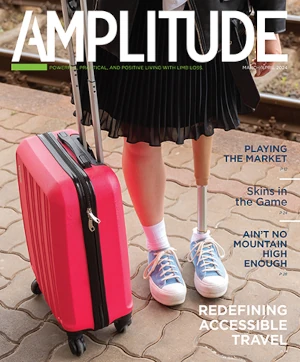
Working-age adults with disabilities who do not get any aerobic physical activity are 50 percent more likely than their active peers to have a chronic disease such as cancer, diabetes, stroke, or heart disease, according to a report from the Centers for Disease Control and Prevention (CDC).
Nearly half (47 percent) of adults with disabilities who are able to do aerobic physical activity do not get any exercise. An additional 22 percent are not active enough. Yet only about 44 percent of adults with disabilities who saw a doctor in the past year got a recommendation for physical activity.
“Physical activity is the closest thing we have to a wonder drug,” said CDC Director Tom Frieden, MD, MPH. “Unfortunately, many adults with disabilities don’t get regular physical activity. That can change if doctors and other healthcare providers take a more active role helping their patients with disabilities develop a physical fitness plan that’s right for them.”
Key findings of the report include the following:
- Working-age adults with disabilities are three times more likely to have heart disease, stroke, diabetes, or cancer than adults without disabilities.
- Nearly half of adults with disabilities get no aerobic physical activity, an important protective health behavior to help avoid these chronic diseases.
- Inactive adults with disabilities were 50 percent more likely to report at least one chronic disease than were active adults with disabilities.
- Adults with disabilities were 82 percent more likely to be physically active if their doctor recommended it.
The Physical Activity Guidelines for Americans recommend that all adults, including those with disabilities, get at least 150 minutes (2.5 hours) of moderate-intensity aerobic physical activity each week. If meeting these guidelines is not possible, adults with disabilities should start physical activity slowly based on their abilities and fitness level.
Doctors and other health professionals can recommend physical activity options that match the abilities of adults with disabilities and resources that can help overcome barriers to physical activity. These barriers include limited information about accessible facilities and programs; physical barriers in the environment; patients’ physical or emotional barriers to participating in fitness and recreation activities; and lack of training in accessibility and communication among fitness and recreation professionals.
“It is essential that we bring together adults with disabilities, health professionals, and community leaders to address resource needs to increase physical activity for people with disabilities,” said Coleen Boyle, PhD, MS, director of the CDC’s National Center on Birth Defects and Developmental Disabilities.
The CDC has set up a dedicated resource page for doctors and other healthcare professionals with information to help them recommend physical activity to their adult patients with disabilities at www.cdc.gov/disabilities/PA.
While healthcare professionals are being encouraged to recommend physical activity to their patients, patients must also be self-motivated to participate in physical activity. Most adults with disabilities, even those with mobility impairments like amputees, are able to participate in some aerobic physical activity, which has benefits that include increased heart and lung function; better performance in activities of daily living; greater independence; improved mental health; and decreased chances of developing serious chronic diseases.
For information on numerous adaptive sports and recreation programs, visit Amplitude’s Resources webpage at www.amplitude-media.com/resources.
This article was adapted from information provided by the CDC.
This article is for informational and educational purposes and is not meant to substitute for medical advice from a qualified medical professional. Consult your healthcare provider before beginning any exercise program.



